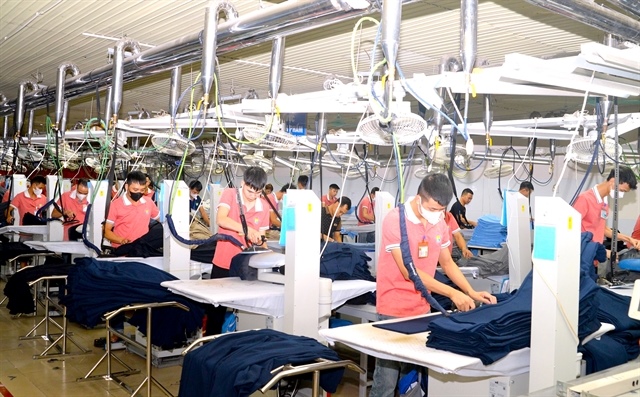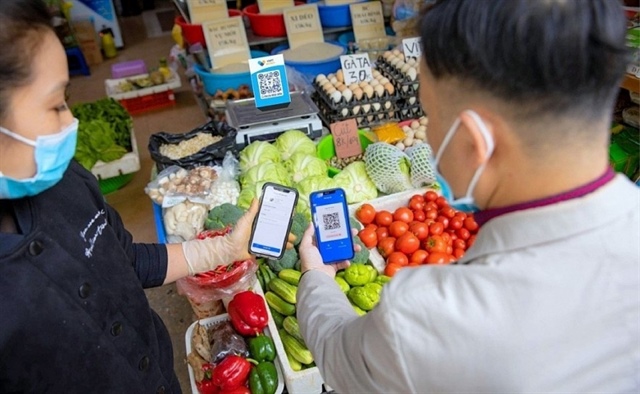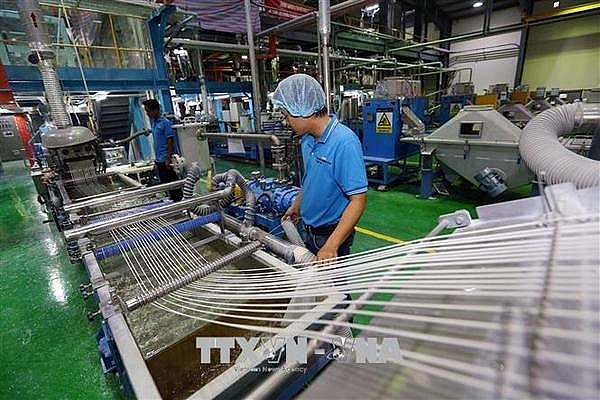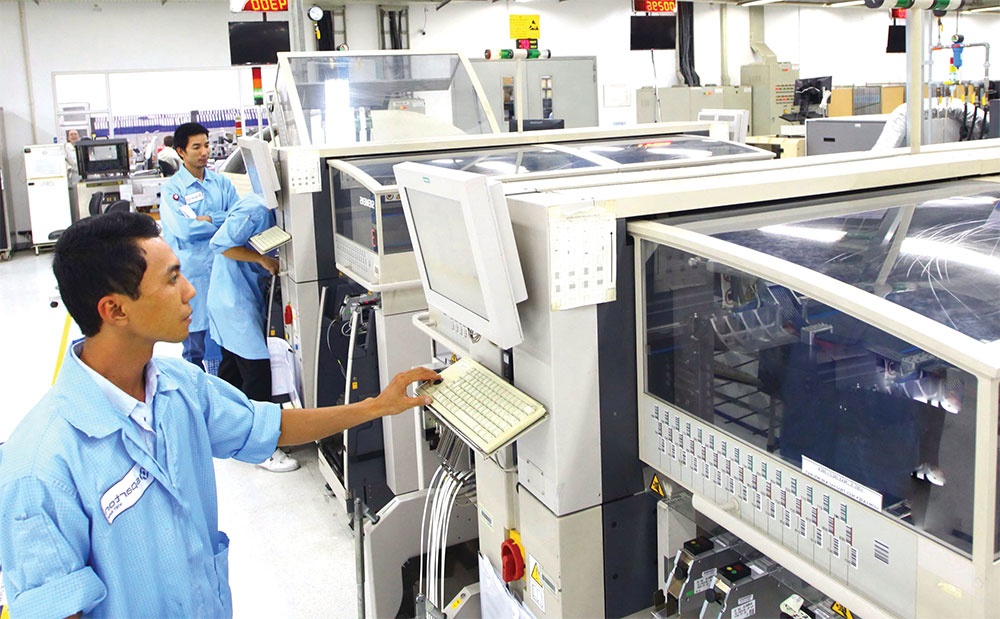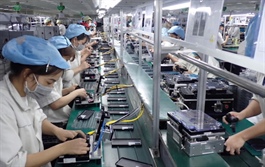Trade cooperation: Highlight of Vietnam-EU relations
Trade cooperation: Highlight of Vietnam-EU relations
Vietnam's trade relations with most European markets have experienced positive growth, not only with Germany, the Netherlands and France, but also other markets in northern, central and southern Europe.
More than two years after the entry into force of the EU-Vietnam Free Trade Agreement, trade and economic cooperation has become a bright spot in Vietnam-EU relations.
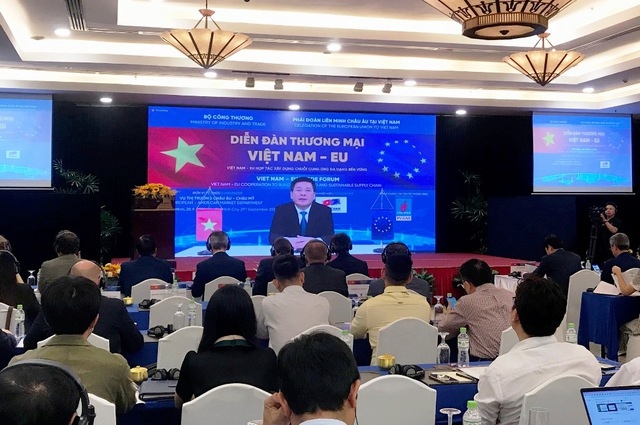
Overview of the forum, held in Ho Chi Minh City. Photo: Le Anh |
Minister of Industry and Trade Nguyen Hong Dien gave the assessment at the Vietnam-EU trade forum on September 29.
According to Dien, the EU remains Vietnam’s top trading partner as the third largest export market and the fifth largest import market.
During the first eight months of 2022, bilateral trade turnover rose by 15% year-on-year to US$42.4 billion.
“Even during the pandemic outbreak, trade revenue between the two sides had been rising,” Dien added.
In the second year of implementing the EVFTA (August 2021 to July 2022), total bilateral trade exchange stood at $61.4 billion, up 12%, in which Vietnam’s exports to the EU increased by 17% to $45 billion, and imports by 0.2% to $16.4 billion.
“It is worth mentioning that Vietnam’s trade relations with the majority of European markets have seen positive growth, not only with Germany, the Netherlands, and France but also with markets in the North, Central, and Southern Europe,” Dien added.
In addition, the structure of Vietnam’s exports to the EU has been diversified and expanded during the first eight months of 2022, ranging from equipment and machinery (up 34.8% year-on-year), garment (41.2%), footwear (36.2%), to agro-fishery-forestry products of coffee (54.4%), seafood (42%), vegetable (18%), and rice (22.2%).
In return, Vietnam has also boosted importing products from the EU, including pharmaceutical products (up 7.6%), chemicals (102%), wood, wooden products, animal feed (15.5%), and milk and dairy products (21.9%).
According to experts, preferential treatments under EVFTA, especially tariff reductions, have significantly improved the competitiveness of Vietnam's exports and their penetration of European markets.
Vietnam has also made strong commitments to ensuring a favorable and transparent business environment, which lays the platform for the country to receive high-quality foreign direct investment from the EU that brings mutual benefits for all stakeholders.
The EU is currently Vietnam’s fifth largest investor with total registered capital of $27.6 billion as of August 2022.
During the January-August period, Vietnam received a total FDI of $2.2 billion from the EU for 104 new projects, representing an increase of 70% year on year.
“This is a welcoming sign and gives us reason to believe in the bright prospects in Vietnam-EU trade, economic and investment cooperation in the coming time, especially with the presence of the EVFTA, and the upcoming EU-Vietnam Investment Protection Agreement (EVIPA),” Dien added.
Greater efforts required to fully utilize EVFTA
The minister also added Vietnam is in a favorable position to further facilitate trade cooperation with the EU, especially as both are pursuing socio-economic recovery in the post-pandemic period.
“Vietnam identifies green growth as a priority for sustainable development, with major advantages from the EVFTA and EVIPA, the country has an edge in attracting investment, technology transfer and technical assistance from EU partners to shift economic structure to a greener and more sustainable direction, including the use of renewables, energy transition, and deeper integration into global value chains,” Dien said.
Sharing Dien’s view, Chairman of the European Chamber of Commerce (EuroCham) Alain Cany said this is the right timing for Vietnam to bolster economic ties with the EU and contribute to the economic recovery efforts on both sides.
Cany highlighted the high economic growth and macroeconomic stability in the country, as well as the significance of boosting trade liberalization between Vietnam and other regions in the world.
In this regard, the EuroCham representative suggested that European businesses want to take advantage of the EVFTA to expand investment activities and trade relations with Vietnam, especially in fields of their expertise, such as science, technology, and green energy.
Deputy Head of the MoIT’s Trade Promotion Agency Ta Hoang Linh said for Vietnam to ensure greater utilization of the EVFTA, each locality needs to align its respective growth strategies with green and sustainability.
Meanwhile, local businesses should be more active in searching for partnerships with their European peers to upgrade technologies and machinery for higher competitiveness and better meet the technical requirements of import markets.
Linh said the MoIT is developing a database of foreign companies for local firms to search for suitable partners.
He reiterated the importance of local traders fully understanding and being aware of EU regulations on product qualities, especially food safety issues before exporting to the market.
“Enterprises should continue to finalize their production procedures toward transparency, consistency with effective traceability of origin, along with more attention on registering intellectual property rights, branding and contact information for better customer services,” Linh noted.



